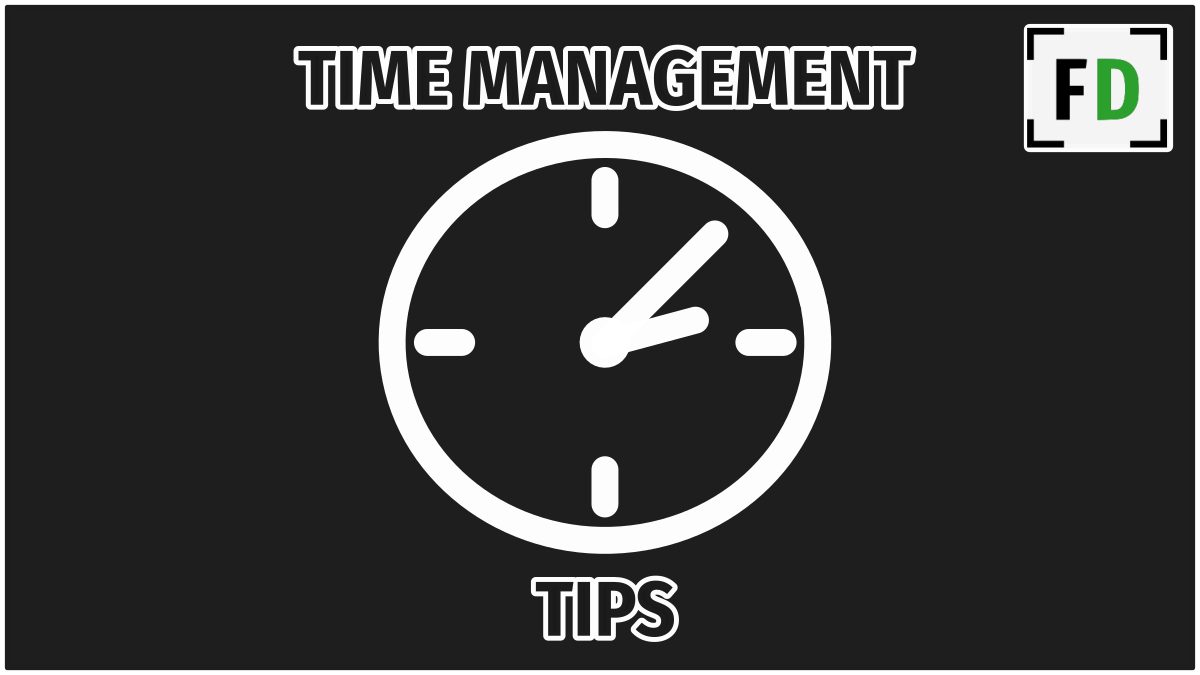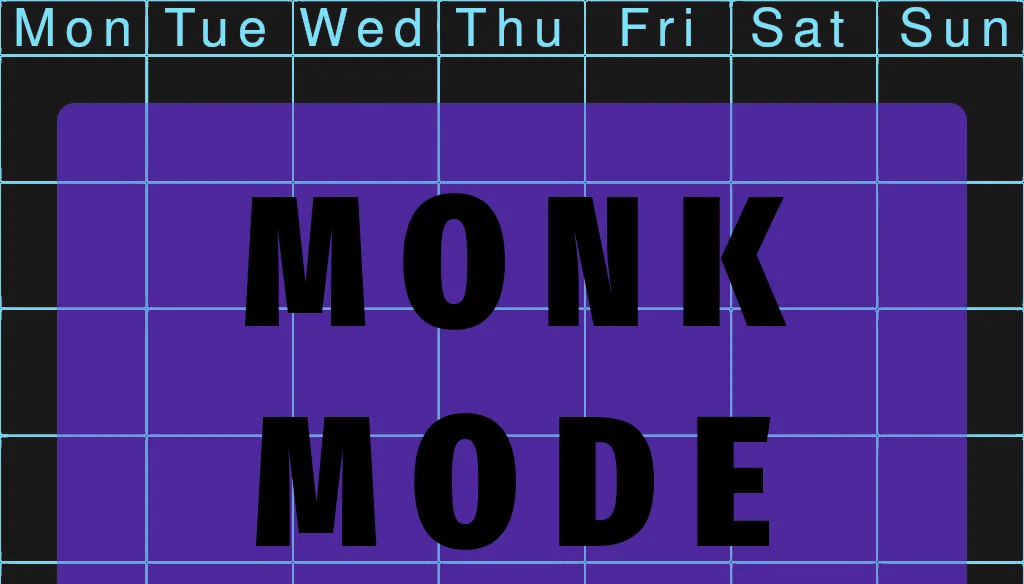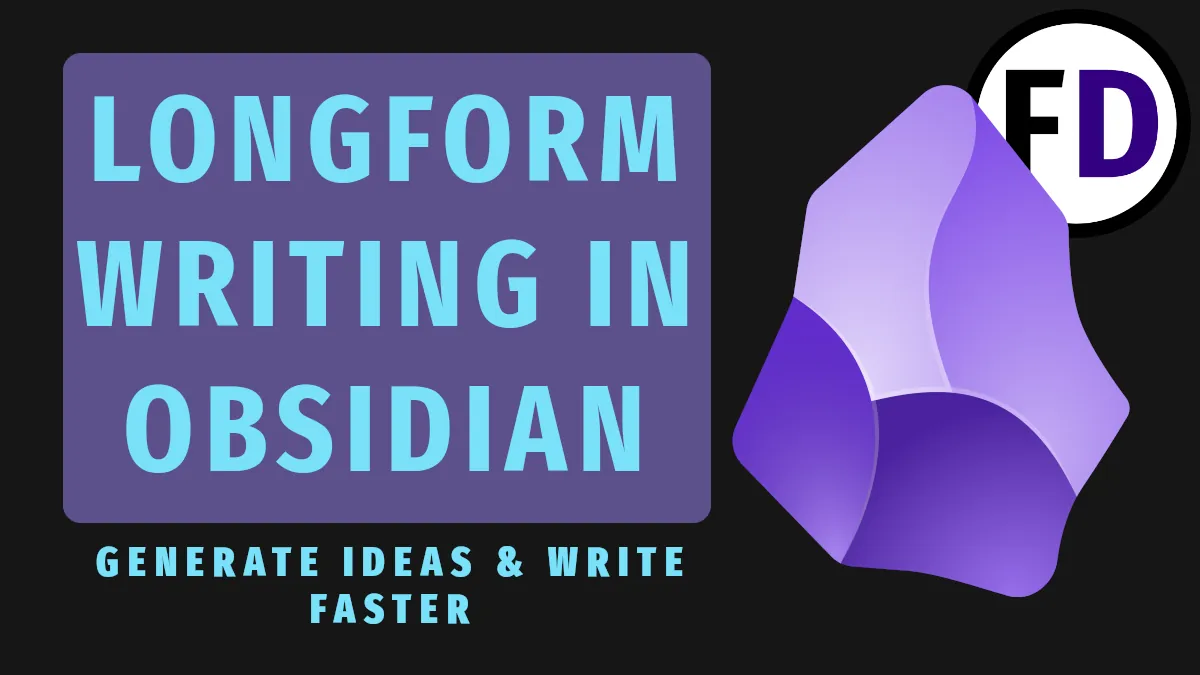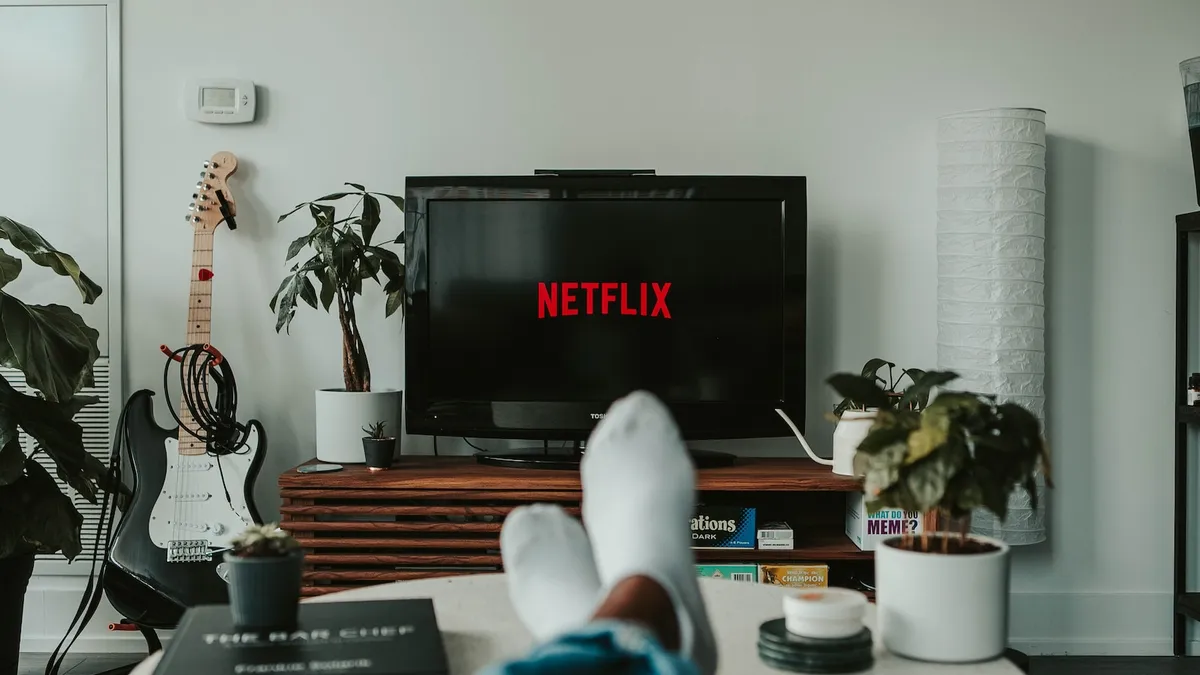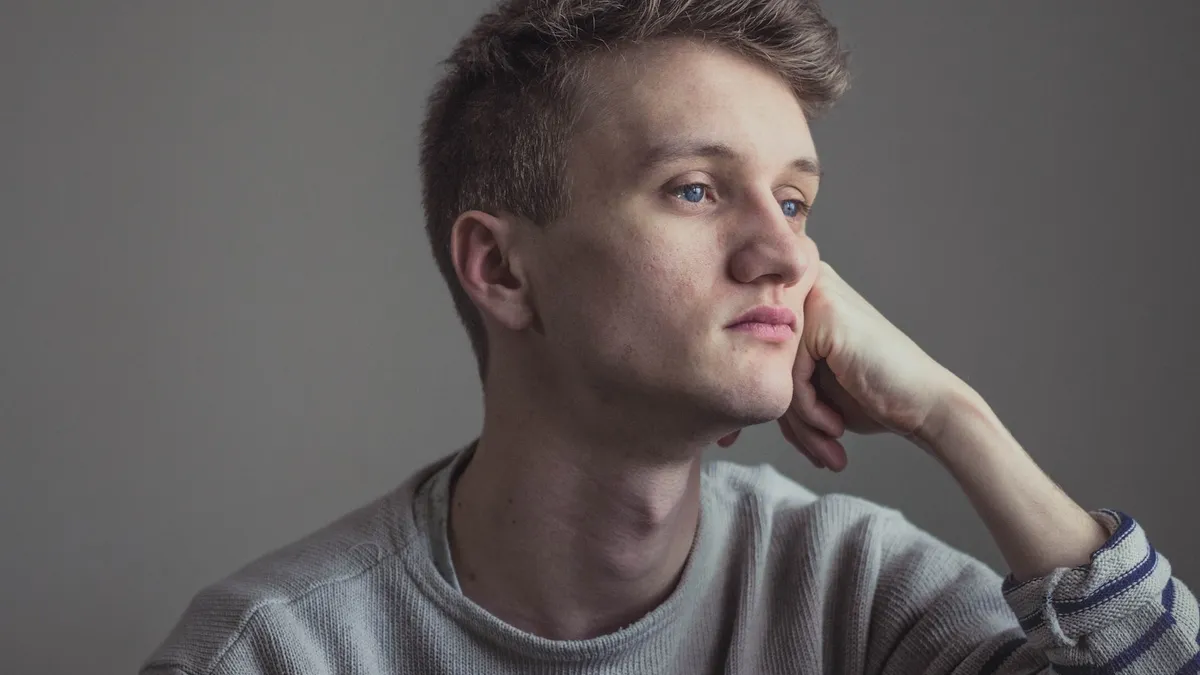Outside my apartment building, people rush in every direction, on foot, on E-Bike, and in cars. I hear horns and sirens far off and conversations on phones below my window. The world is telling me people are getting things done and that I should too. But should I? And how can I get more done?
The world has ramped up over the last 30 years. A pocket-sized planner is no longer enough to organize your life or your day. Productivity systems, time management philosophies, and prioritization matrixes developed to make us do more instead lead us to confusion. Can’t getting more done be simple?
Do you really need three apps on your phone, a cloud service, and two monthly subscriptions?
This series of articles discusses the core ideas of how to get more done. Starting with what to do, each piece covers a key to doing more of whatever you do. Using these ideas together will make you a productivity powerhouse.
This article is the second in a series, How to Get More Done. Each post covers a different aspect of becoming the most productive version of yourself.
By the end of this article, you will know not only how to get more done but also how to focus your efforts on the things worth your time.
I will look at the three most prominent productivity philosophies and find out what we can learn from each. Then boil down the essence of what it takes to get more done. So settle in; there’s much to learn and a lot to get through.
- Pomodoro
- Bullet Journal
- GTD (Getting Things Done)
What We Want to Get Done
Before discussing getting more done or task management, we need to know what we’re talking about. Sure, you want to finish your work tasks and maybe even a few jobs around the house, but is that all we want to get done?
Although you may want to focus solely on getting more ‘work’ done, the world (and the clock) doesn’t differentiate between work and leisure, and you shouldn’t either.
Instead, think:
“A task is anything I want to get done that isn’t done yet.”
So playing lego with your son is a task, as is editing a piece of writing or mowing the lawn. Ideas like work-life balance and prioritization are easier to achieve when you have a universal unit of time/life to work with – the task.
But where do we find all our tasks?
The Tasks We Want to Get Done
Armed with our new definition of a task, we realize that tasks are everywhere. And they are.
If you have a list of DIY tasks to do around the house and an hour of free time on a Sunday afternoon, it’s likely that you’ll pick something from the list. But you could have chosen a better task had it been on your list.
Perhaps you’ve been meaning to call a family member or set up a college fund for your child, but because it’s not on your list, you’re fixing a wobbly table leg.
The solution is to find all the tasks hanging around our lives: in our minds, houses, and devices. We can begin to talk about task management once we have gathered them all into one place.
Brain Dump
The way to do this initially is to perform a brain dump- an extended session of emptying your mind of tasks, writing them as they spill out.
Performing a complete brain dump is an incredible experience, and I recommend everyone try it at least once. However, it is time-consuming and challenging. Therefore, using a trigger list is highly recommended.
Tools for your first brain dump
Because of the volume you will offload from your mind, you need tools that can handle all those ideas, thoughts, and tasks. David Allen recommends using individual pieces of paper for each capture but I find this both wasteful and overwhelming to sort through afterward.
Instead, I like to just create a running list on A4 paper but there are some other choices:
- Post-it notes
- Notebook
- Notes App (Evernote, OneNote, etc.)
- List App
Using pen and paper is for me the faster way to capture and speed is essential when you’re doing a brain dump, otherwise, it will take even longer.
The way I have coached clients to do this is in three stages:
Explore your physical world
Exploring your physical world means going room to room, focusing on every item, and asking yourself, “Do I have any attention on this?” If you do, write it down.
Remember that you’re looking for tasks or potential tasks. For example, finding a pillow and saying “I love this pillow” is not something you need to write down – there’s no likely task you might need to do concerning it.
But finding a book and saying “I love this book” could result in a task “Reread XYZ.”
Tasks may not even be related entirely to the items you explore, you may put your focus on a wok in a cupboard, and it may trigger a desire that you want to learn Japanese or buy a new spatula. Write them down.
As you can see, you will accumulate a massive volume of tasks quickly. But there’s more than just your physical world to explore
Explore your mental world
Once you have cleared your physical world of tasks, you probably feel pretty good, but there is more to do. Next is to get all of the potential tasks floating around your mind out of your head.
Some will come to you immediately “I want to change jobs” or “I want to start learning C++,” but others may need some coaxing. Again, this is where a trigger list will come in handy.
The best way to start is to list the 7-15 areas of your life, the main sections that make you, you. If you read the previous article in this series, you’ll already be familiar with them. Start with the few that we all share, such as:
- Finance
- Health
- Fitness
- Family
- Social Life
Then list the areas of your life that are individual to you. These may include the main functions of your job, hobbies that you spend a lot of time on, and other significant responsibilities you may have.
Remember, these are not tasks, but they do create tasks. So, going through these areas will help you come up with the related tasks. For example, when you think about finance, you may be reminded that “I want to set up a new bank account” or “I should set up an automatic payment to pay back my debt.”
After you have exhausted these areas, you can think about other things you may want to do or achieve in the near or distant future.
- “I want to go to Spain one day.”
- “I want to learn to sail.”
- “I want to write a book.”
Write them all down.
Explore Your Digital World
The final place to discover tasks is your digital world. Your digital world includes your social media, messaging apps, email, online notes, and other places you spend time online. Most trigger lists ignore this potential place for hidden tasks, but it’s more important than ever.
Once you have sifted through your entire physical, metal, and digital worlds, well done! You’ve taken the first and most crucial step to getting more done and also getting the right things done.
You won’t need to go through this process again, as everything has been collected, and nothing is left lurking anywhere, right?
No matter how thorough your brain dump was, there are bound to be tasks that remain, and by tomorrow there will be new potential tasks that come into your physical, mental, and digital worlds. Have no fear. There is a solution.
Capturing
Capture is the act of noting down tasks as they occur to you throughout your day. Instead of looking for them (like in the brain dump), capturing is a habit you need to make to keep your task pool up-to-date.
To make this habit stick, capturing needs to be:
- Fast – if it takes more than a few seconds to capture, you won’t do it
- Convenient – Your capture tools need to be with you at all times
- Reviewed – There’s no point writing a task down if you aren’t going to do it or put it into your system
But first, let’s see what we can learn from the three most popular productivity systems.
The Pomodoro Technique – “If I can control time, I can get more done.”
The Pomodoro Technique, at least the way most people use it, is just a glorified school bell. It tells you when to start and when to stop and assumes that you’ll get a lot done during the time between. But the Pomodoro Technique seems to work for so many people; let’s take a look under the hood.
How the Pomodoro Technique works:
- Decide on a task
- Set a timer and work on it for 25 minutes
- Take a 5-minute break
Francisco Cirillo developed this technique when he was a student; he could not study until he set himself a tomato timer (Pomodoro means tomato in Italian) for 10 minutes and told himself to read until the timer went off. Then, to his surprise and relief, he could finally concentrate without distracting himself!
The 10 minutes eventually become 25, but the idea is the same – tell yourself you only have to do something for a limited amount of time, and you’ll be more likely to do it.
If you’ve ever avoided doing a massive piece of work you need to get done, you’ll understand this; the idea that you don’t know how long it will take makes the task unbearable.
This leads to problems, which is why I don’t use the Pomodoro technique – most tasks don’t take 25 minutes.
In the book, Cirillo says that if you have time left over before the timer rings, you can review what you’ve done, but for tasks that take more than 25 minutes, there’s no real solution. For example, if I’m getting started writing or coding or editing photos, the last thing I want to do is take a break every twenty-five minutes; that just kills flow.
The Pomodoro Technique benefits so many students, however, because they aren’t used to working for extended periods yet. While most working professionals are used to working for hours on end on one task, most college kids just haven’t built that kind of focus yet.
Is there something else that makes the Pomodoro Technique so popular?
It’s the first step of the technique, decide on a task. You probably glossed right over it, but this is a productivity powerhouse of an idea. When we think of things we want to get done, we usually don’t think of specific tasks. Instead, we think things like:
- I need to work on my website
- I should do something about the meeting next week
- The garden needs work
Unspecified tasks like these are productivity killers, they go round and round in your head, but you don’t make any progress on them because you haven’t yet decided what you’re going to do.
But when you use the Pomodoro technique, you must decide what to do for the twenty-five minutes. So it forces you to define the task.
- I’ll add a call to action to my sidebar
- I’ll create my slides for the meeting
- I’ll mow the lawn
What can we learn from the Pomodoro Technique?
- Define your tasks
- Build up your stamina and take breaks when you need them
The Bullet Journal – “If I log it, I’ll get more done.”
The Bullet Journal Method means many things to many people, and I’m sure you’ve seen those beautiful artistic spreads on Instagram of people’s bullet journals. Here, however, I will be talking about the Bullet Journal Method as laid out by Ryder Carroll in his book of the same name.
Carroll found that he struggled with remembering tasks and focusing on what he needed to get done. So he developed the Bullet Journal to keep himself productive in the face of his ADHD.
This version of the bullet journal is basic and barebones. It consists of
- A Year Calendar
- A Month Calendar
- A Task list
- Daily Logs
- 2 Page Spreads for project planning
Even this basic iteration of the Bullet Journal is much more of a complete productivity system than The Pomodoro Technique. It allows you to schedule tasks in the future with the two calendars, review the tasks you’ve done by logging them and plan projects which often produce the tasks we need to do.
A calendar is the most commonly used productivity tool in the workplace. Most people don’t use a to-do list or a timer, but almost everyone uses a calendar. Why? Ignoring that most companies expect you to use them, they are just so valuable. Trying to remember all the appointments and future tasks without one would be a disaster.
The task list and daily log give you a place to record thoughts and ideas you might want to act on. Without one, what are you going to do with that brilliant idea? Try to remember it? We all know how that goes.
The space and freedom to brainstorm and plan a project on a two-page spread is one of the reasons people feel less stress when they bullet journal. A trip to Japan, for example, is a big project to plan with lots of moving parts. Writing all your ideas about locations, train journeys, and budgeting in one place and then organizing them into a coherent plan gives you a strong sense of control.
- You need a calendar
- Task list
- Project Planning
GTD – “If I capture and process everything, I’ll get more done.”
When it comes to time management and productivity tools, GTD (Getting Things Done) is a different kind of beast. Instead of focusing on one part of the productivity pie, like time management (Pomodoro Technique) or task management (bullet journal), GTD is a system that incorporates every aspect of your life into one extensive design.
For true GTDers, everything is filtered through the system, their meals, their choice of car, their plans for retirement, where to store old letters, everything.
If you want to be genuinely self-aware and align your goals and beliefs with everything you do, GTD is perhaps the only option. The downside, of course, is that there is a lot to learn and maintain.
Rather than go through the entire GTD system here, I will pick out the core parts that David Allen recommends.
- Calendar – Only put time-sensitive things on the calendar
- Capture – You need somewhere to write down your thoughts and ideas
- What’s the next action – clarify your actions to make them actionable
- Project List – Keep a list of current projects that you’re working on
- Areas of Focus – A short list of the areas of your life
- Two-minute rule – Do immediately any task that takes two minutes or less
- Vision – A vision of the future you write down for inspiration and direction
Create Your System & Start Getting More Done Today
We’ve looked at many options, but I want to simplify them here. From the systems above and my experience, these four tools will make the difference and help you get more done.
1. A Calendar
If you already use a calendar for work, or the default one on your phone is good, keep using that. So many different calendars are available now, but they all come down to adding an event to a particular day. That’s it. As long as your calendar can do that, stick with it.
That being said, if you’re not using a calendar and want the best one for you, let’s take a look at the options.
- Simple Calendar Android
Best for – Users who want a basic, lightweight, free and open-source calendar - Fantastical macOS, iOS
Best for – Apple users who want an alternative to Apple Calendar - Calendar
Android, iOS, Web
Best for – When people need to schedule time with you - Wall or Desk Calendar
Best for – People who want a physical calendar
2. A Capture Tool
- Google Keep
- Microsoft OneNote
- Apple Notes
- Evernote
- A Notebook
- Notes App
Another option is to create a list in your task management tool, “Capture,” and capture your thoughts and ideas directly into it.
3. Task Management System
- Google Tasks
- Microsoft Todo
- Apple Reminders
- SimpleTask
- Any.do
- Next Cloud Tasks
- Remember the Milk
4. Goals for the areas of your life
Keeping your goals written down for the areas of your life is a combination of GTD’s vision, goals, and areas of focus. What are you doing it all for if you don’t know what you want to achieve in the long term?
Managing your tasks will ensure nothing falls through the cracks, but the only way to know you’re doing the right tasks is to envision the future clearly.
“Make sure you’re managing the right tasks”
Gregory J.
You don’t need a new app or tool to write down your goals; a page in your notebook (I recommend the front page), a Google doc, or a note in your Notes app will do.
First, identify the areas of your life; you’ll have about 7-15 different areas. Find examples here. Then, for each area, write a goal or vision. So, for finance, you may write: “Earn enough passive income to quit my job.” You can write SMART goals if you like, i.e., “Earn $2,000 per month in passive income by 2026.” But you don’t need to. The point is to give you direction for the different areas of your life; giving specifics and timeframes may seem arbitrary when you’re talking years in the future.
Integrated Systems Instead of Four Separate Apps
Using an integrated system means that all your apps can talk to each other, will be available across devices, and accessible from everywhere. You are likely already using some of these services, so adding a little extra to your workflow won’t be a big deal.
- Microsoft’s Ecosystem
Best for – People who use Outlook Email for work- Outlook Calendar
- OneNote
- Microsoft ToDo
- Google’s Ecosystem
Best for – Gmail users and people invested in the Google ecosystem- Google Calendar
- Google Keep
- Google Tasks
- Apple’s Ecosystem
Best for – Apple users who use multiple devices (iPhone, IPad, Macbook, etc.)- Apple Calendar
- Apple Notes
- Apple Reminders
- Nextcloud’s Ecosystem
Best for – Users who prefer free and open source software and control of their data- Nextcloud Calendar
- Nextcloud Notes
- Nextcloud Tasks
Three Productivity System Examples And How to Use Them
OK, we talked about the ideas and tools. Let’s learn how to set up a system that works for you.
There are three different options here:
- An offline system – for minimalists or analog types
- Integrated – For those who want their apps to talk to each other
- Mix and Match – For those who want control and choice
An offline productivity system
This is the simplest option of the three, but it’s still highly workable and will keep you completing those tasks without the need to be checking your phone or laptop constantly.
What you need:
- A Notebook – I recommend a Ring Binder; find out why in my paper-based GTD article.
- A Calendar – You could use a calendar in your notebook (especially useful if you move about all day), but one kept on the wall means you can look up and see it instantly.
How to Use the System
- In the front of your notebook, write each area of your life and your goals for each area.
- When you come up with an idea, write it in the back of your notebook, this is your capture area. Then, go through your thoughts and move any you want to get done to your to-do list.
- The rest of your notebook is your to-do list. Keep this open all day as you work, and check off the tasks as you complete them.
- Time-specific tasks just put on your calendar
An Integrated productivity system
I will use Google as the system here, but it’s almost the same with any of the options.
What you need:
- Google Calendar
- Google tasks
- Google Keep
- Google Assistant (optional)
- Google Docs (optional)
How to Use the System
- In Google Keep or Docs, create the goals for each area of your life and keep them somewhere easy to find.
- When ideas come to you, store them in Google Keep, or let the assistant do it for you. (you may need to set Keep as your default notes app to do this.)
- Look through Keep often and move ideas you want to move on to Google tasks. Or add tasks directly, either manually or via the assistant.
- Keep tasks open either on your device or in the browser all day so you can work from your list and check tasks off.
- Put time-specific tasks on your calendar (Google assistant can do this too.)
A Mix n’ Match Productivity System
If you don’t want to be tied to one ecosystem or want more choice, a prettier interface, or to pick the best tools for you. Here is one version of what that may look like
What you need:
- Evernote
- A notebook
- Simple Calendar
How to Use the System
- Create a cool graphic of your goals and set it to the wallpaper for your devices or desktop.
- Use Evernote for writing down ideas when they come to you while reading or in the shower (waterproof phone?)
- Add your tasks to your notebook, which you can carry around with you
- Use Simple Calendar as a lightweight way to schedule your time
Final Thoughts
This is the second in a series of articles on how to get more done. By the end of this series, you’ll be doing more than you ever thought possible and achieving the things you always wished for but never started.

